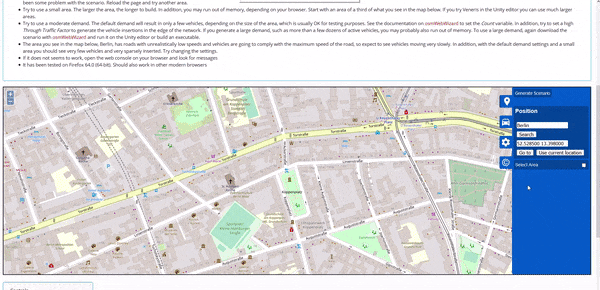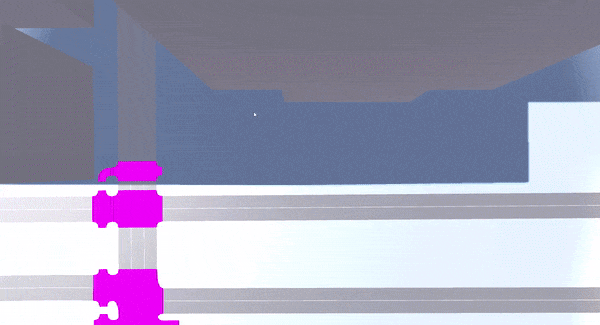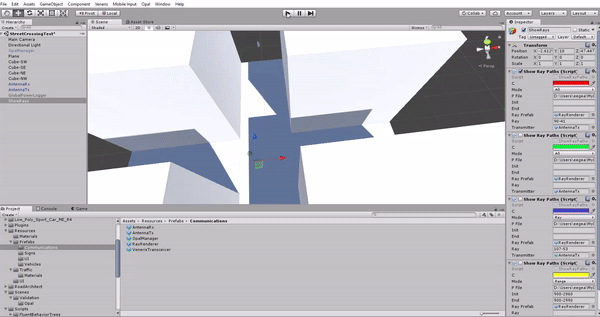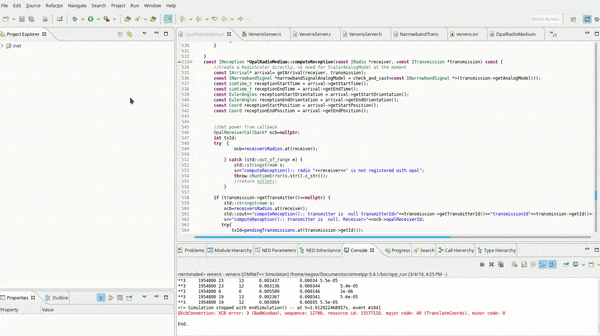Veneris: Vehicular Networks Simulator with Realistic Physics
Veneris is a simulation framework for research on Vehicular Networks and Cooperative Automated Driving, although it can be also used for general wireless networks simulation which need 3D environment-aware propagation simulation.
Veneris is made of a traffic simulator, implemented on top of the Unity game engine , which includes a realistic vehicle model and a set of driving and lane change behaviours that reproduce the traffic dynamics; a ray-launching GPU based propagation simulator, called Opal, and a set of modules which enable bidirectional coupling with the widely used OMNET++ network simulator.
Our related paper can be downloaded from IEEEXplore or here
Esteban Egea-Lopez, Fernando Losilla, Juan Pascual-Garcia and Jose Maria Molina-Garcia-Pardo, "Vehicular Network Simulation with Realistic Physics", IEEE Access, 2019, DOI:10.1109/ACCESS.2019.2908651
Another paper about using Opal for electromagnetic characterization has been published in PLoS ONE.
Esteban Egea-Lopez, Jose Maria Molina-Garcia-Pardo, Martine Lienard, Pierre Degauque, "Opal: An open source ray-tracing propagation simulator for electromagnetic characterization", PLoS ONE, 16(11): e0260060, 2021, DOI:10.1371/journal.pone.0260060
These tools can be used independently or combined in different ways to perform different types of simulations:
- Traffic simulation: build an scenario from real-world map data and run it with Veneris to get traffic related metrics.
- Hybrid network-traffic simulation: combine the traffic simulation with a network simulation with any protocol stack from OMNET++. The simulation can be unidirectional or bidirectionally coupled (not yet finished).
- Network simulation with ray-launching based propagation: run a OMNET++ simulation with propagation computed by ray launching with Opal.
- Hybrid simulation with ray-launching based propagation: run a hybrid Veneris-OMNET++ simulation with propagation based on ray launching with Opal.
- Electromagnetic characterization: build the 3D environment with Veneris and launch a propagation simulation with Opal.
Veneris is free open source with MIT license. Feel free to try it and contribute.
Veneris simulator
Physically realistic 3D traffic simulator
A set of Unity components that provide a realistic microscopic road network simulation in an interactive 3D environment. Builder components are used to generated the scenario elements: roads, intersections, traffic lights or buildings. Vehicle components include a model of the dynamics of the vehicle and components which model the behavior of the vehicles on roads, intersections and the interaction with other vehicles. Communication components implement the communication with simulation modules. Managers handle different aspects of the simulation globally.
Opal
Multipath channel propagation on GPU
A ray-launching based, deterministic RF propagation simulator, implemented in C++ with NVIDIA Optix, a library and application framework for high performance ray tracing on the GPU.
Features
Scenarios from real-world map data

Interactive 3D environment

Simulations for research or education

Propagation with ray launching on GPU

Hybrid simulations with OMNET++/INET

Copyright Esteban Egea-Lopez - 2019-2021. Last modified: 05-2021